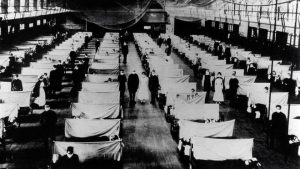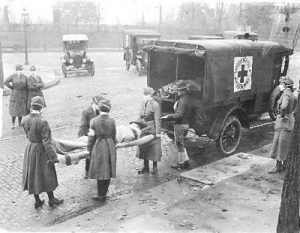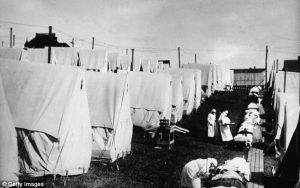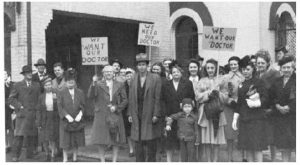During the 1918 Spanish Flu pandemic Chiropractic played a role in helping people. Interestingly it was not just about an aching back or neck, the common complaint many have when they choose Chiropractic health care today.The influence of the Chiropractic adjustment procedure then, apparently played a much bigger role.
The Success of Chiropractic During the 1918 Flu Pandemic


The 1918 influenza pandemic has been labeled as one of the most devastating outbreaks in the history of the world. The number of deaths in 1918 is estimated at between 20 and 40 million people worldwide. Over 675,000 American citizens lost their lives due to this awful epidemic. Why are we talking about this? The 1918 flu crisis was a turning point in the Chiropractic profession. Chiropractic historians have marked the 1918 Flu Pandemic as a major factor in the success, proliferation and national Licensing of the chiropractic profession. Here are some of the statistics that give merit to the power the Chiropractic adjustment had in preventing flu deaths.
“In the state of Iowa, medical doctors treated 93,590 patients, with 6,116 deaths – a loss of one patient out of every 15. In the same state, 4,735 patients were treated by chiropractors with a loss of only 6 cases – a loss of one patient out of every 789.”1
National figures show that 1,142 chiropractors cared for 46,394 for influenza during 1918, with a loss of 54 patients – one out of every 859.
In New York City, 950 out of 10,000 cases died with medical methods while 25 out of 10,000 died using drugless methods.
Yes, the medical profession was seeing many of the worst of the worst; however, one of the greatest statistics backing chiropractic care comes from the state of Oklahoma. There were 233 cases in which the medical doctors had cared for patients and eventually pronounced them as “lost” or beyond hope… chiropractors took care of all 233 with only 25 deaths.1
Chiropractic’s journey into health care took a huge leap forward thanks to its incredible effect on the thousands of Americans during the flu crisis. People came to see firsthand the amazing results that can be obtained with the chiropractic adjustment. When you get adjusted, you increase immune function2. An increase in immune function is important for everything from the cold and runny nose to influenza, cancer, and heart disease. An adjustment will stimulate your immune system to better fight off any illness in your body. Not only is it good for those who are sick, adjustments have a wonderful effect on healthy individuals as well. Sometimes the most beneficial adjustment is the one you get when you feel good.


We live in a different day and age than in the early 1900’s and the stresses we are under today are far greater in many ways. We are exposed to pollutants and toxins in our environment and food that were not thought of then. Fortunately, we have other tools at our disposal today as well. Besides getting regular chiropractic adjustments, it is important to:
- Get sun exposure or supplement with vit. D
- Exercise
- Avoid sugar, it depresses immune function
- Eat a healthy diet rich in fresh, whole foods and to drink plenty of clean water
- Wash hands and avoid contact with people unless necessary
- Sleep at least 7.5 hours. If you sleep less than 6 hours, according to research, your body becomes 4.2 more susceptible to the cold virus3.
- Pray -large report in the Indian Journal of Psychiatry, meditation and prayer have been found to produce significant health benefits.
- Walter R. Rhodes, DC, The Official History of Chiropractic in Texas, Texas Chiropractic Association, 1978.
- Ari Cohn, DC Journal of Vertebral Subluxation Research ~ September 30, 2008 ~ Pages 1-5 . A review of the literature on the connections between the nervous and the immune systems, and to explore the contention that chiropractic adjustments have on immune function
- Prather AA, Janicki-Deverts D, Hall MH, Cohen S. UCSF Journal Sleep. 2015 Sep 1;38(9):1353-9. doi: 10.5665/sleep.4968. Behaviorally Assessed Sleep and Susceptibility to the Common Cold










